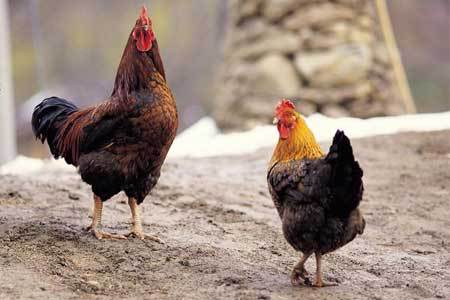Ammonia and the environment

Recently, World Poultry Science Association (WPSA) Indonesia branch invited Prof. Paul H. Patterson from the Department of Poultry Science, Pennsylvania State University, United States to give a technical seminar and I was one of the participants.
Ammonia volatilization from poultry manure was the main issue explained by Prof. Patterson. It’s interesting from my point of view because Prof. Patterson presented data showing that 64% of atmospheric ammonia in United States comes from livestock and poultry production (estimation of Environment Protection Agency (EPA) of United States, 1987).
He continued, based on fieldwork conducted with commercial pullets, laying hens, broilers and turkeys in Pennsylvania from 1994-1997 indicated that between 18 and 40% of dietary N is lost to the atmosphere as ammonia or other nitrogenous compounds. As a direct consequence to the environment, ammonia nitrogen losses to the atmosphere can result in direct contamination of surface water. Whereas NO and N2O losses can contribute to the formation of nitric acid, one of the principle components of acid rain.
To reduce N excretion, Prof. Patterson recommends some dietary strategies:
1) formulate based on amino acid requirements rather than crude protein; 2) optimise the dietary amino acid profile with the bird’s requirement (ideal protein concept); 3) phase-feed poultry for their current rate of growth or production; 4) utilise the true amino acid digestibility of feed ingredients to enhance nitrogen-retention and reduce excretion; 5) select feed ingredients with low nutrient variability to reduce margins of safety in protein and amino acid formulation; 6) utilise enzymes and feed additives to enhance nitrogen retention; and 7) avoid or control ingredient anti-nutritional factors to improve protein digestibility.
From the explanation of Prof. Patterson, here are some points that we can discuss:
1. The data shared by Prof. Patterson from EPA is an old data, so how about the percentage today? How many percent is the atmospheric ammonia today if we talk globally? In my opinion, the percentage is increasing because reviewing partly, in some Asian countries lately, the development of poultry productions showed an increasing trend.
2. In a discussion session Prof. Patterson frankly said, poultry producers in United States are not too aware of the environment. “They’re concerned with performance and profit, but they keep listening to opinion and explanation about the environment recommended by institutions and universities,” he said. My question is: Does your company care about the environment?
3. Based on Prof. Patterson’s recommendations, which strategy or combination of strategies have you applied in your company that is effective to reduce N excretion, but still efficient in feed cost?
Join 31,000+ subscribers
Subscribe to our newsletter to stay updated about all the need-to-know content in the poultry sector, three times a week. Beheer
Beheer








 WP Admin
WP Admin  Bewerk bericht
Bewerk bericht